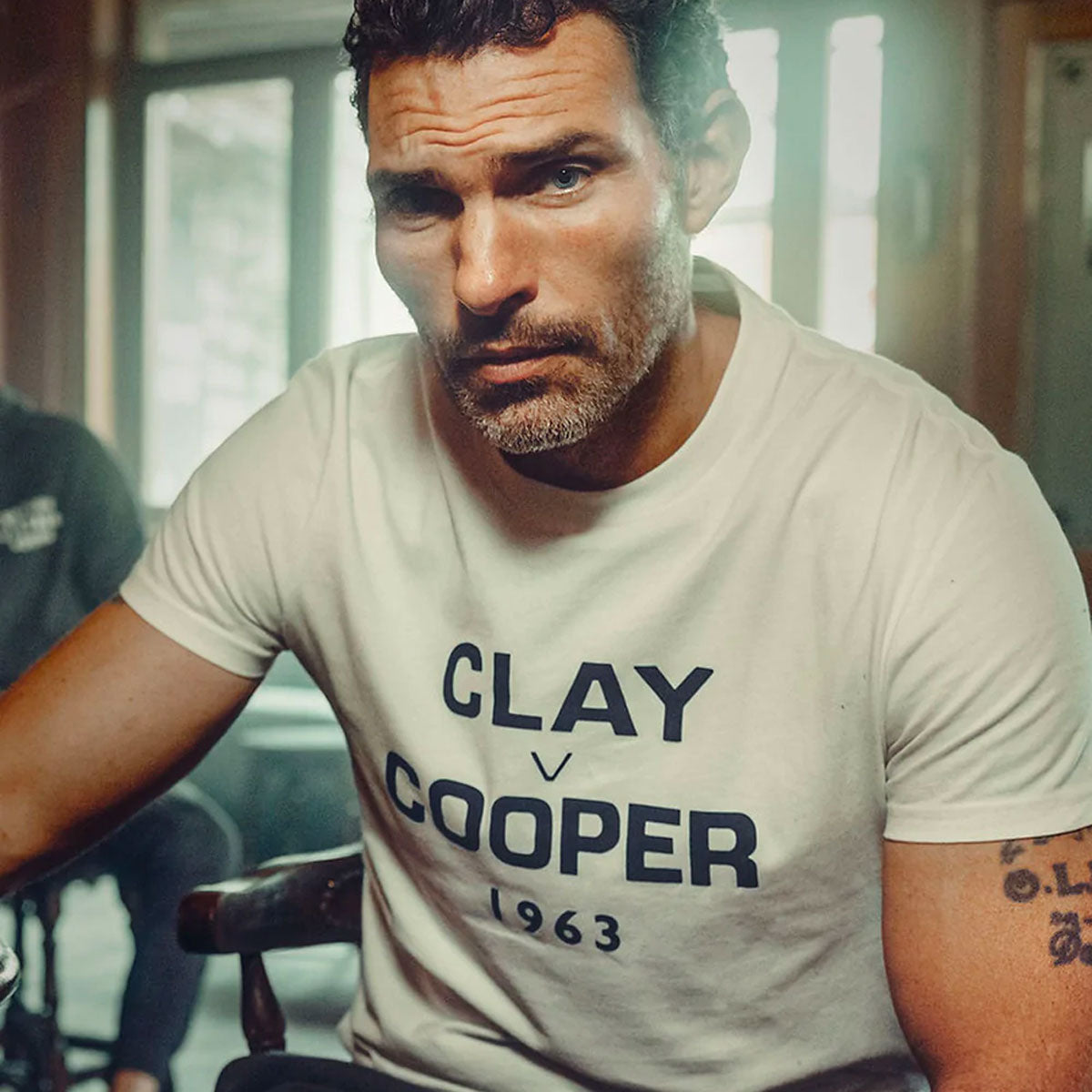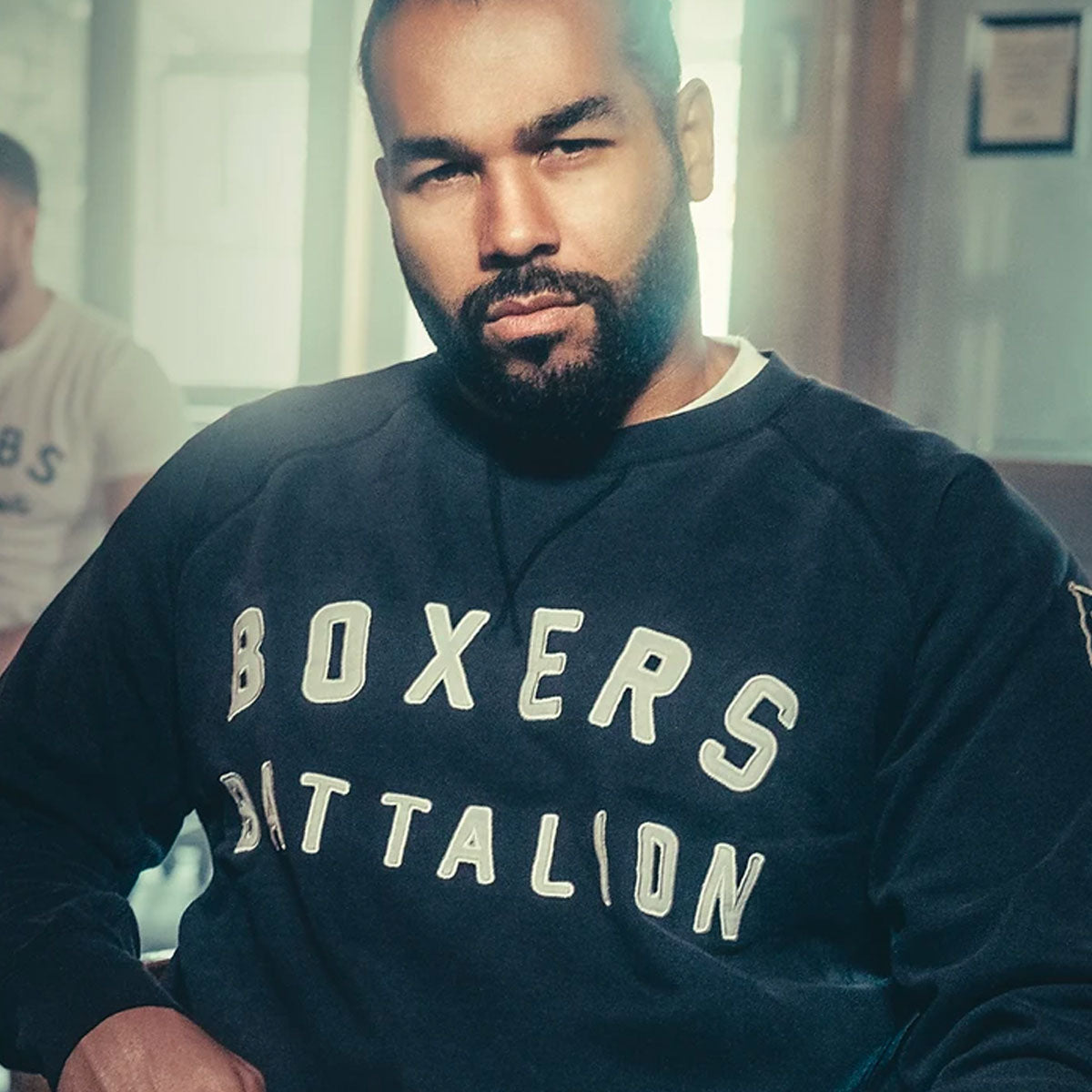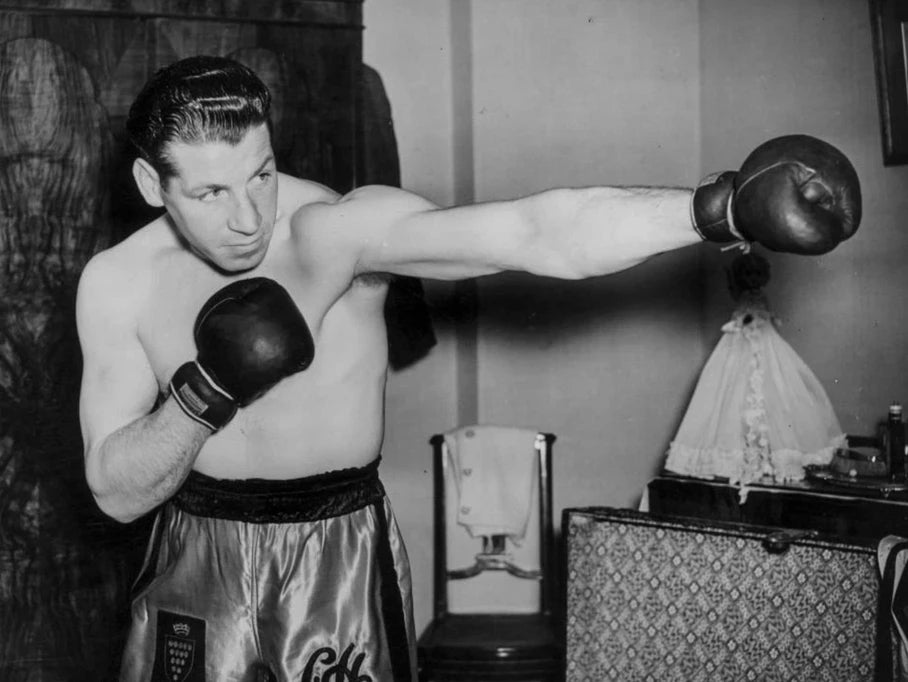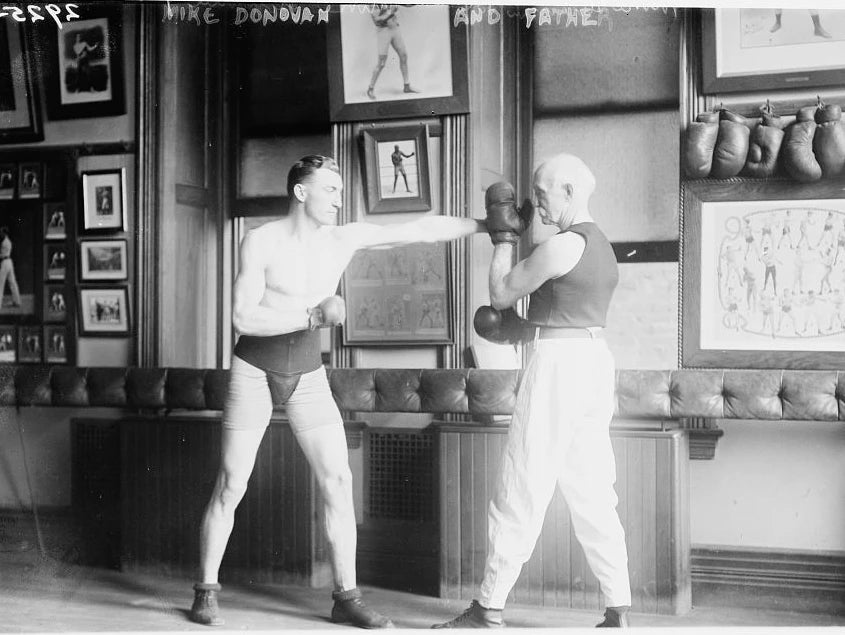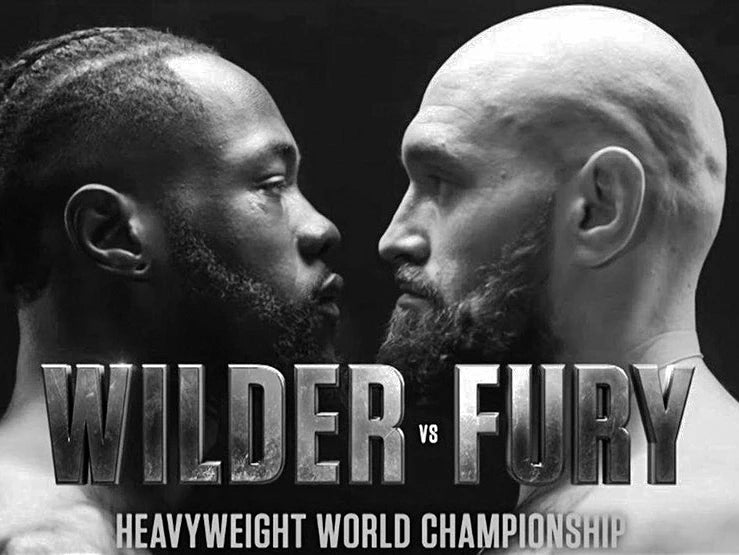Contributed by sportswriter Paul Zanon
Eight decades before Carl Froch was boasting about his knockout of George Groves with 80,000 fans in attendance, Len Harvey had already fought in front of 90,000 at White City Stadium. The only person to have matched these figures was Anthony Joshua when he took on the former long reigning Ukrainian heavyweight champion, Wladimir Klitschko in 2017.
In a career that spanned over 22 years, Harvey remarkably fought from flyweight all the way up to heavyweight. In fact, he was a mere 12 years old when he made his debut against Young King on 2 January 1920, with Harvey weighing in at a modest 68lbs.
Born on 11 July 1907, Leonard Austen Harvey fought 60 times before his eighteenth birthday, racking up 53 wins, three points losses and four debatable draws. Incredibly, within that timeframe, the Cornish teenager had also fought the full 15 round distance 12 times and even went 20 rounds once, at the age of 16.

1926 proved to be a big learning curve for Harvey. As an 18 year old, his body was constantly developing and he’d gone from fighting at featherweight the year before, to weighing in at 138lbs against Alf Mancini on 4 January 1926, at The Ring, Blackfriars Road, Southwark.
Wily Anglo-Italian Mancini boasted a record of 67-14-6 at the time and after 20 hard fought rounds, the pair walked away with a respectable draw. Incidentally, Alf was the uncle of one of the best cut men in history, the late great, Dennie Mancini, who was an iconic fixture at the Lonsdale shop in Beak Street, Soho.
Three months later on 29 April 1926, Harvey challenged Harry Mason for the British welterweight title. Mason was 73-9-5 at the time and had won the British and European lightweight titles the year before. This was a genuine test for Harvey.

Despite knocking Mason down in the first and eighteenth rounds, the fight was deemed a draw at the end of the 20 round distance. Mason would go on to fight until 1937, mainly at welterweight, clocking up a few more belts in his 215 fight career, while the 6ft Harvey was still growing into his frame and became a natural middleweight before the year was out.
Although unsuccessful at his first attempt for a British title, 19 year old Harvey’s eyes never strayed far from the prize. On 25 April 1927, he stopped Joe Rolfe in 10 rounds at the Holland Park Rink, Kensington. The fight acted as an eliminator for the British middleweight title, but for whatever reasons, Harvey’s opportunity to challenge for the coveted Lonsdale belt didn’t happen for over two years. During this time he clocked up 18 wins on the bounce, including a first round knockout over the Belgian middleweight champion, Antoine Dubois.

Finally, on 16 May 1929, Harvey took on the reigning British and Commonwealth middleweight champion, Alex Ireland at Olympia, Kensington. Ireland, born in Scotland, but fighting in England, had also held the European title the year before and was relatively fresh, having only fought 30 times in comparison to Harvey, who was entering his 103rd contest. Despite having a small weight advantage on the Stoke Klimsland native, Ireland was unable to get out of the way of Harvey’s onslaught and was knocked out in the seventh session.
Over the next 19 months, the Cornishman fought eight times without losing. He defended his straps twice, then in January 1931, Harvey went Stateside, fighting three times in three months at Madison Square Garden. Unfortunately, he didn’t get a fair shake, losing on close points decisions each time. The first two contests were against Vince Dundee and the third against New Yorker, Ben Jeby. The New York Times said this of the first Dundee encounter. "To Harvey goes all credit for a gallant stand against a foe whose iron resistance to punishment carried the battle. In the final analysis it was the ability to withstand the pace and the battering which told the tale, and in this respect Dundee excelled his rival."
Three months after his American adventure, Harvey was back to winning ways. He defeated his next eight opponents, including a challenge from Jock McAvoy for Harvey’s British and Commonwealth straps on 21 March 1932, in front of 10,000 attendees at King’s Hall, Bell Vue, Manchester. Then on 4 July 1932, Cornwall’s favourite fighting son took on the reigning International Boxing Union and National Boxing Association world middleweight champion, Frenchman Marcel Thil.
The Cannes resident had gained a points victory over Vince Dundee the year before and had put on a very strong performance against hard hitting American Gorilla Jones, to take the world titles. Despite a gallant performance from Harvey at White City stadium, Thil won by a small points margin.
By 13 March 1933, 25-year-old Harvey had started to campaign at light heavyweight, drawing against Eddie Phillips at the Albert Hall in a British title eliminator. After stepping back down to unsuccessfully defend his British and Commonwealth middleweight straps against former foe, Jock McAvoy, Harvey faced Phillips again on 12 June 1933 at Olympia, Kensington, for the British light heavyweight title.

The well spoken Cornish favourite, who loved a three piece suit and silk ties, was very calm in the build up to this fight. His relaxed energy carried well into the ring as Harvey beat Phillips on points, making him a two weight British champion.
Four months later, Harvey travelled to Paris, handing Algerian born Frenchman, Carmelo Candel his first KO loss in 50 fights, by way of a fifth round stoppage. After a successful defence of his British light heavyweight title against fellow Brit Jack Peterson, Harvey moved up again, challenging the reigning Commonwealth heavyweight champion, Larry Gains. Despite giving away over 35 lbs in weight to the Canadian, Harvey pulled off a points victory behind his boxing skills at the Albert Hall on 8 February 1934.
Two fights later, on 4 June 1934, Harvey was back in with Peterson, but this time at heavyweight, with the British and Commonwealth heavyweight titles at stake, in front of 70,000 fans at White City Stadium. With Harvey weighing below the modern day light heavyweight limit, Peterson proved to be too strong and relentless, stopping his opponent in the twelfth round. Four fights later, the two locked horns again and despite a better performance from Harvey, Peterson walked away with a clear points victory over 15 rounds.
Harvey didn’t fight for the next 11 months, but when he did on 9 November 1936 at the Empire Pool, Wembley, it was at his natural fighting weight, taking on world champion John Henry Lewis, for the light heavyweight world title. Once again despite putting on a gutsy performance, Harvey fell short of world honours again, losing a points decision.

In his next four fights, Harvey defended his British light heavyweight crown against former foes Jock McAvoy and Eddie Phillips, and regained the vacant Commonwealth heavyweight crown against Larry Gains, this time stopping the noticeably larger Canadian fighter in 13 rounds.
Four months later, on 10 July 1939 Harvey took on Jock McAvoy in their fourth encounter, but this time far more was at stake. In addition to the British and Commonwealth light heavyweight titles, the vacant BBBofC world light heavyweight title was on the line (last held by Joe Choynski and vacated after Harvey’s reign in 1942). The Associated Press summed up the epic encounter. "A crowd of 90,000 at White City Stadium saw Harvey finish strongly to take the decision after he had been floored by McAvoy for a count of one in the second round... surviving a terrific beating in the fourteenth round, Harvey caught McAvoy in his corner in the final round and beat him badly with a series of hard right crosses."
Shortly after, on 1 September 1939 World War II officially erupted and Harvey joined the effort. Due to being a sporting hero, he was awarded sergeant status and by 1940, he was commissioned as a pilot officer.
While countries were fighting all over the globe, Harvey decided to exchange leather one last time, before officially bowing out of professional boxing. On 20 June 1942, at White Hart Lane Stadium, Tottenham, Freddie Mills challenged Harvey for his British and Commonwealth light heavyweight titles. After a three year hiatus, Harvey’s attempt against a very active Mills did not go as planned. The multiple weight champion was knocked through the ropes in the second round and counted out while still out of the ring.
Harvey fought in every class from flyweight to heavyweight and retired with an incredible 146 fight professional boxing record, consisting of 122 wins, 14 losses and 10 draws. He claimed to have had in excess of 400 professional contests, but the belief is he was also referring to booth fights.

After boxing, Harvey became a publican, taking ownership of the Steam Passage pub in Angel, North London. He died at his home on 28 November 1976 from a heart attack, but his spirit still lives on, with his portrait on the wall of the National Portrait Gallery. As one of Britain’s most decorated fighters, Harvey was posthumously inducted into the International Boxing Hall of Fame in 2008, alongside living recipients Larry Holmes and British promoter, Frank Warren.
Paul Zanon, has had nine books published, with almost all of them reaching the No1 Bestselling spot in their respective categories on Amazon. He has co-hosted boxing shows on Talk Sport, been a pundit on London Live, Boxnation and has contributed to a number of boxing publications, including, Boxing Monthly, The Ring, Daily Sport, Boxing News, Boxing Social, amongst other publications.
Eight decades before Carl Froch was boasting about his knockout of George Groves with 80,000 fans in attendance, Len Harvey had already fought in front of 90,000 at White City Stadium. The only person to have matched these figures was Anthony Joshua when he took on the former long reigning Ukrainian heavyweight champion, Wladimir Klitschko in 2017.
In a career that spanned over 22 years, Harvey remarkably fought from flyweight all the way up to heavyweight. In fact, he was a mere 12 years old when he made his debut against Young King on 2 January 1920, with Harvey weighing in at a modest 68lbs.
Born on 11 July 1907, Leonard Austen Harvey fought 60 times before his eighteenth birthday, racking up 53 wins, three points losses and four debatable draws. Incredibly, within that timeframe, the Cornish teenager had also fought the full 15 round distance 12 times and even went 20 rounds once, at the age of 16.

1926 proved to be a big learning curve for Harvey. As an 18 year old, his body was constantly developing and he’d gone from fighting at featherweight the year before, to weighing in at 138lbs against Alf Mancini on 4 January 1926, at The Ring, Blackfriars Road, Southwark.
Wily Anglo-Italian Mancini boasted a record of 67-14-6 at the time and after 20 hard fought rounds, the pair walked away with a respectable draw. Incidentally, Alf was the uncle of one of the best cut men in history, the late great, Dennie Mancini, who was an iconic fixture at the Lonsdale shop in Beak Street, Soho.
Three months later on 29 April 1926, Harvey challenged Harry Mason for the British welterweight title. Mason was 73-9-5 at the time and had won the British and European lightweight titles the year before. This was a genuine test for Harvey.

Despite knocking Mason down in the first and eighteenth rounds, the fight was deemed a draw at the end of the 20 round distance. Mason would go on to fight until 1937, mainly at welterweight, clocking up a few more belts in his 215 fight career, while the 6ft Harvey was still growing into his frame and became a natural middleweight before the year was out.
Although unsuccessful at his first attempt for a British title, 19 year old Harvey’s eyes never strayed far from the prize. On 25 April 1927, he stopped Joe Rolfe in 10 rounds at the Holland Park Rink, Kensington. The fight acted as an eliminator for the British middleweight title, but for whatever reasons, Harvey’s opportunity to challenge for the coveted Lonsdale belt didn’t happen for over two years. During this time he clocked up 18 wins on the bounce, including a first round knockout over the Belgian middleweight champion, Antoine Dubois.

Finally, on 16 May 1929, Harvey took on the reigning British and Commonwealth middleweight champion, Alex Ireland at Olympia, Kensington. Ireland, born in Scotland, but fighting in England, had also held the European title the year before and was relatively fresh, having only fought 30 times in comparison to Harvey, who was entering his 103rd contest. Despite having a small weight advantage on the Stoke Klimsland native, Ireland was unable to get out of the way of Harvey’s onslaught and was knocked out in the seventh session.
Over the next 19 months, the Cornishman fought eight times without losing. He defended his straps twice, then in January 1931, Harvey went Stateside, fighting three times in three months at Madison Square Garden. Unfortunately, he didn’t get a fair shake, losing on close points decisions each time. The first two contests were against Vince Dundee and the third against New Yorker, Ben Jeby. The New York Times said this of the first Dundee encounter. "To Harvey goes all credit for a gallant stand against a foe whose iron resistance to punishment carried the battle. In the final analysis it was the ability to withstand the pace and the battering which told the tale, and in this respect Dundee excelled his rival."
Three months after his American adventure, Harvey was back to winning ways. He defeated his next eight opponents, including a challenge from Jock McAvoy for Harvey’s British and Commonwealth straps on 21 March 1932, in front of 10,000 attendees at King’s Hall, Bell Vue, Manchester. Then on 4 July 1932, Cornwall’s favourite fighting son took on the reigning International Boxing Union and National Boxing Association world middleweight champion, Frenchman Marcel Thil.
The Cannes resident had gained a points victory over Vince Dundee the year before and had put on a very strong performance against hard hitting American Gorilla Jones, to take the world titles. Despite a gallant performance from Harvey at White City stadium, Thil won by a small points margin.
By 13 March 1933, 25-year-old Harvey had started to campaign at light heavyweight, drawing against Eddie Phillips at the Albert Hall in a British title eliminator. After stepping back down to unsuccessfully defend his British and Commonwealth middleweight straps against former foe, Jock McAvoy, Harvey faced Phillips again on 12 June 1933 at Olympia, Kensington, for the British light heavyweight title.

The well spoken Cornish favourite, who loved a three piece suit and silk ties, was very calm in the build up to this fight. His relaxed energy carried well into the ring as Harvey beat Phillips on points, making him a two weight British champion.
Four months later, Harvey travelled to Paris, handing Algerian born Frenchman, Carmelo Candel his first KO loss in 50 fights, by way of a fifth round stoppage. After a successful defence of his British light heavyweight title against fellow Brit Jack Peterson, Harvey moved up again, challenging the reigning Commonwealth heavyweight champion, Larry Gains. Despite giving away over 35 lbs in weight to the Canadian, Harvey pulled off a points victory behind his boxing skills at the Albert Hall on 8 February 1934.
Two fights later, on 4 June 1934, Harvey was back in with Peterson, but this time at heavyweight, with the British and Commonwealth heavyweight titles at stake, in front of 70,000 fans at White City Stadium. With Harvey weighing below the modern day light heavyweight limit, Peterson proved to be too strong and relentless, stopping his opponent in the twelfth round. Four fights later, the two locked horns again and despite a better performance from Harvey, Peterson walked away with a clear points victory over 15 rounds.
Harvey didn’t fight for the next 11 months, but when he did on 9 November 1936 at the Empire Pool, Wembley, it was at his natural fighting weight, taking on world champion John Henry Lewis, for the light heavyweight world title. Once again despite putting on a gutsy performance, Harvey fell short of world honours again, losing a points decision.

In his next four fights, Harvey defended his British light heavyweight crown against former foes Jock McAvoy and Eddie Phillips, and regained the vacant Commonwealth heavyweight crown against Larry Gains, this time stopping the noticeably larger Canadian fighter in 13 rounds.
Four months later, on 10 July 1939 Harvey took on Jock McAvoy in their fourth encounter, but this time far more was at stake. In addition to the British and Commonwealth light heavyweight titles, the vacant BBBofC world light heavyweight title was on the line (last held by Joe Choynski and vacated after Harvey’s reign in 1942). The Associated Press summed up the epic encounter. "A crowd of 90,000 at White City Stadium saw Harvey finish strongly to take the decision after he had been floored by McAvoy for a count of one in the second round... surviving a terrific beating in the fourteenth round, Harvey caught McAvoy in his corner in the final round and beat him badly with a series of hard right crosses."
Shortly after, on 1 September 1939 World War II officially erupted and Harvey joined the effort. Due to being a sporting hero, he was awarded sergeant status and by 1940, he was commissioned as a pilot officer.
While countries were fighting all over the globe, Harvey decided to exchange leather one last time, before officially bowing out of professional boxing. On 20 June 1942, at White Hart Lane Stadium, Tottenham, Freddie Mills challenged Harvey for his British and Commonwealth light heavyweight titles. After a three year hiatus, Harvey’s attempt against a very active Mills did not go as planned. The multiple weight champion was knocked through the ropes in the second round and counted out while still out of the ring.
Harvey fought in every class from flyweight to heavyweight and retired with an incredible 146 fight professional boxing record, consisting of 122 wins, 14 losses and 10 draws. He claimed to have had in excess of 400 professional contests, but the belief is he was also referring to booth fights.

After boxing, Harvey became a publican, taking ownership of the Steam Passage pub in Angel, North London. He died at his home on 28 November 1976 from a heart attack, but his spirit still lives on, with his portrait on the wall of the National Portrait Gallery. As one of Britain’s most decorated fighters, Harvey was posthumously inducted into the International Boxing Hall of Fame in 2008, alongside living recipients Larry Holmes and British promoter, Frank Warren.
Paul Zanon, has had nine books published, with almost all of them reaching the No1 Bestselling spot in their respective categories on Amazon. He has co-hosted boxing shows on Talk Sport, been a pundit on London Live, Boxnation and has contributed to a number of boxing publications, including, Boxing Monthly, The Ring, Daily Sport, Boxing News, Boxing Social, amongst other publications.

